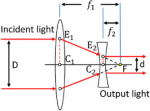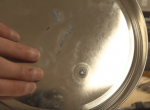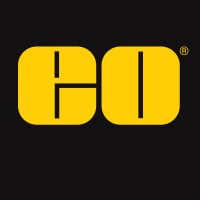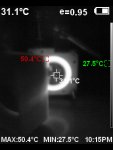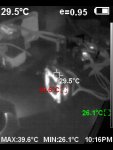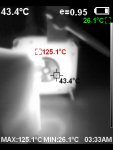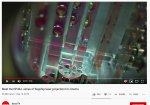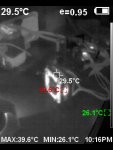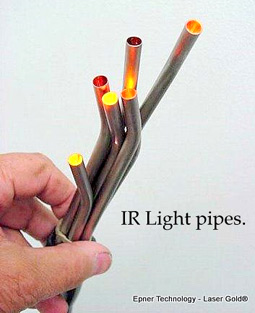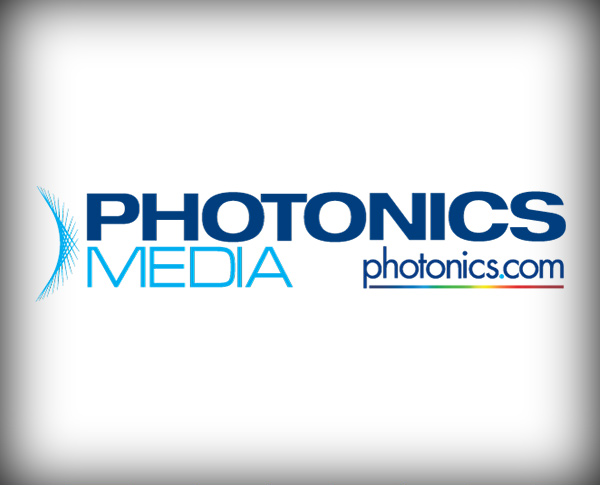- Joined
- Jul 10, 2015
- Messages
- 13,051
- Points
- 113
Knife edging example.
The resulting beam/band is as wide as the number of beams.
The PBS combines 2 rows of 4 but the left band has to pass through that wave plate in the bottom center to be polarized opposite of the right band. I have never seen a PBS cube that could manage 100w.....better to just direct each array through a lens to your target.
7 arrays could be arranged 1 in the center surrounded by 6 more for 700w
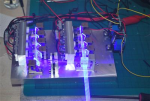
You knife edge by the width of your beams so knife edging your 31/34 arrays won't really accomplish anything, a 4 array 2x2 would be the same as setting them into a bigger square.....might as well do that and lens each to your 2mm spot at your wheel or 1 array center surrounded by 6 for a total of 700w, each lensed and trained to your target or all focused with one big lens.....of course you could arrange your arrays 3x3 for 900w and lens each to your wheel....the problem is the 24 chips in the 31/34 arrays have aggressive divergence so you need to be close to your wheel to make a small spot focused through your lens, it becomes a question of physical size.......you could knife edge a bunch of c-lens corrected laser diodes building stacks of rows and then with a big lens focus them all to your wheel but that's a big undertaking.
You could try to fiber couple your arrays but you lose coherence length if that matters for pumping phosphor, from what I read it does otherwise just focus down the biggest blue industrial LED you can get.......I know they use them is some data projectors but hundreds of watts I have not seen, doesn't mean they don't exist I just haven't seen one .
The dicro glass plate set at a 90 degree angle lets the projector fire the blue laser bundle through it to hit the phosphor wheel then the light from the phosphor wheel can't get back through the dicro glass plate so it is reflected 90 degrees through a lens, this would make more room for you I think, you would need to abandon firing through your reflector and direct your phosphor wheel produced light to a reflector with lenses/mirrors so you have room to jam in half a dozen or more 31/14 arrays and focusing lenses near your wheel or angle your wheel and lens/reflect your product to the remote reflector........or possibly a bigger phosphor wheel.....but the spotlights I posted use LEP and 405nm lasers which are single mode, you can get a very good knife edged array of beams focused, but they are not as powerful.
The resulting beam/band is as wide as the number of beams.
The PBS combines 2 rows of 4 but the left band has to pass through that wave plate in the bottom center to be polarized opposite of the right band. I have never seen a PBS cube that could manage 100w.....better to just direct each array through a lens to your target.
7 arrays could be arranged 1 in the center surrounded by 6 more for 700w

You knife edge by the width of your beams so knife edging your 31/34 arrays won't really accomplish anything, a 4 array 2x2 would be the same as setting them into a bigger square.....might as well do that and lens each to your 2mm spot at your wheel or 1 array center surrounded by 6 for a total of 700w, each lensed and trained to your target or all focused with one big lens.....of course you could arrange your arrays 3x3 for 900w and lens each to your wheel....the problem is the 24 chips in the 31/34 arrays have aggressive divergence so you need to be close to your wheel to make a small spot focused through your lens, it becomes a question of physical size.......you could knife edge a bunch of c-lens corrected laser diodes building stacks of rows and then with a big lens focus them all to your wheel but that's a big undertaking.
You could try to fiber couple your arrays but you lose coherence length if that matters for pumping phosphor, from what I read it does otherwise just focus down the biggest blue industrial LED you can get.......I know they use them is some data projectors but hundreds of watts I have not seen, doesn't mean they don't exist I just haven't seen one .
The dicro glass plate set at a 90 degree angle lets the projector fire the blue laser bundle through it to hit the phosphor wheel then the light from the phosphor wheel can't get back through the dicro glass plate so it is reflected 90 degrees through a lens, this would make more room for you I think, you would need to abandon firing through your reflector and direct your phosphor wheel produced light to a reflector with lenses/mirrors so you have room to jam in half a dozen or more 31/14 arrays and focusing lenses near your wheel or angle your wheel and lens/reflect your product to the remote reflector........or possibly a bigger phosphor wheel.....but the spotlights I posted use LEP and 405nm lasers which are single mode, you can get a very good knife edged array of beams focused, but they are not as powerful.
LEP
Noticed some more LEP items for sale besides the acebeam w-10 and w-30 flashlights. https://www.ebay.com/itm/Weltool-848M-LEP-Tactical-Flashlight-18650-Spotlight-Outdoor-Long-Throw-Light/362648763832?hash=item546f8cfdb8:m:mGtYETYLnNH3EYa0znanCFQ...
laserpointerforums.com
Last edited:




